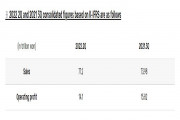 2022-10-07
2022-10-07
Samsung Electronics today announced its earnings guidance for the third quarter of 2022. Consolidated Sales: Approximately 76 trillion Korean won Consolidated Operating Profit: Approximately 10.8 trillion Korean won The above estimates are based on K-IFRS. Please note that Korean disclosure regulations do not allow earnings estimates to be offered as a range. To comply with such regulations, the above figures represent the median of the estimate ranges provided below. Sales: 75 ~ 77 trillion Korean won ...
Continue reading →
2022-10-06
Science-minded cannabis company leverages Fluence’s LED technology to develop new medical strains and pursue sustainability goals AUSTIN, Texas (Oct. 5, 2022)—Fluence, a leading global provider of energy-efficient LED lighting solutions for commercial cannabis and food production, announced today its LED partnership with Bethesda, Maryland-based, CULTA, a vertically-integrated seed-to-sale cannabis company offering indoor- and outdoor-grown cannabis products. As the first medicinal cannabis distributor to grow outdoors in Marylan...
Continue reading →
 2022-10-04
2022-10-04
LG MAGNIT leverages AI and machine learning to deliver stunning visuals DALLAS, Sept. 28, 2022 /PRNewswire/ -- LG Electronics USA has unveiled the LG MAGNIT 4K 136-inch Micro LED residential display (LSAD Series), offering integrators and end users an extraordinary home cinema, digital art and entertainment experience. Complete with LG's webOS smart TV platform, popular streaming apps, screen sharing and AI-enhanced processing, the new Micro LED Extreme Home Cinema screen is being demonstrated for the first time at the CE...
Continue reading →
 2022-10-04
2022-10-04
[Photo] Seoul Semiconductor’s Booth for ‘Light + Building 2022’ (Photo: Business Wire)
ANSAN, South Korea--(BUSINESS WIRE)--Seoul Semiconductor Co., Ltd. (KOSDAQ: 046890), a globally recognized optical semiconductor manufacturer, takes part in ‘Light + Building 2022’ held in Frankfurt, Germany, from October 2 to 6, 2022 to unveil its high-efficiency and high-performance LED lighting solutions. This lighting festival is one of the world’s largest lighting expos attended by more than 200,000 visitors from 55...
Continue reading →
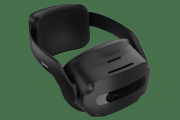 2022-10-03
2022-10-03
28 September 2022
Next-level VR headset in a compact form factor has mixed reality capabilities for immersive training, collaboration and 3D design;
End-to-end enterprise solution, supported by cloud software, security features and services to protect and advance business.
Research Triangle, NC – September 28, 2022 – Today, Lenovo™ announced the new all-in-one virtual reality (VR) headset engineered for the enterprise. The comfortable fitting, slim profile six-degrees-of-freedom (6DoF) ThinkReali...
Continue reading →
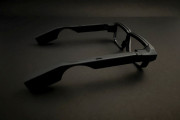 2022-10-03
2022-10-03
The glasses combine state-of-the-art USound audio technology, optical display system and hardware that enables spatial computing in a small form factor for assistive AR applications.
GRAZ, Austria, Sept 27, 2022 - (ACN Newswire) - USound, the leading provider of micro-electro-mechanical systems (MEMS) loudspeakers for hearables and wearables, announces the cooperation with the Indian company Focally on the first generation of their Universe AR Glasses.
Focally's Universe AR glasses featuring state-of-the-art USound audio technology, optical display...
Continue reading →
 2022-10-03
2022-10-03
Tokushima, Japan – 3 October 2022: The excitement and success of Nichia’s H6 Series of LEDs continues to grow, now even more considering the big market potential generated from new licensing agreements with our partners. Nichia is proud to announce that the H6 Series of LEDs are now ready for a new era of LED adoption where the focus on quality of light can take center stage without compromise. It became accepted in the industry that the trade-off between achieving high lumen efficacy and high CRI / TM-30 was difficult to over...
Continue reading →
 2022-10-03
2022-10-03
Nichia Corporation and Savant Technologies LLC, known as GE Lighting, a Savant company, announced that they have entered into a cross-license agreement. Under the agreement, Savant will be licensed under Nichia’s patents on filament LED lightbulbs, including Nichia’s U.S. Patent No. 9,752,734. Nichia will be licensed to supply LEDs containing potassium fluoride silicon, or PFS phosphor, in the residential and retail market channels. The patents licensed to Nichia under the cross license include U.S. Patent Nos. 7,497,973 and 7,453,195. This ...
Continue reading →
 2022-10-03
2022-10-03
September 27, 2022
A wide range of CSP from 1800K to 6500K, from CRI 70 to CRI 95, and from RGB color to Full Spectrum
FREMONT, California – Sep 27, 2022 – Bridgelux is proudly launching its new series of Chip Scale Package (CSP) LEDs. Made without bond wires or plastic molds, Bridgelux’s advanced flip chip technology and phosphor coating technology makes them the perfect fit for high dense clustering, tunable CCT and high luminous flux output. Seamless and flexible assembly on boards enables customer specific...
Continue reading →
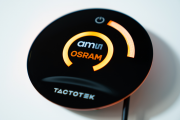 2022-09-30
2022-09-30
ams OSRAM and TactoTek have developed a demonstrator with the new RGB side-looker LED OSIRE E5515 from ams OSRAM, which thanks to TactoTek's in-mold structural electronics (IMSE) technology can be integrated into automotive interior in a space-saving design. Image: ams OSRAM TactoTek and ams OSRAM jointly boost possibilities for future automotive interior illumination by integrating side-looking automotive RGB LEDs in thin, smart structures using an innovative in-mold process The new OSIRE® E5515 LED&n...
Continue reading →
 2022-09-29
2022-09-29
September 27, 2022
Signify and Upciti to partner to help cities and utilities across North America leverage their street lighting infrastructure to improve transportation, public safety and sustainability
New connected sensor technology to support smart parking, crowd detection and traffic management applications
City of Albany, New York to pilot sensor solution and extend the value of Signify’s connected LED luminaires and Interact IoT system, deployed as part of NYPA’s Smart Street Lighting program
Bridg...
Continue reading →
 2022-09-27
2022-09-27
An extended family of spectral sensors from ams OSRAM enables quantitative, digitized point-of-care diagnostics for fluorescence and colorimetric based assays.
At the beginning of 2020, diagnostic testing was typically done using samples collected by professional experts who then sent the samples to be analyzed in laboratories using large, expensive specialized equipment. The professionally analyzed results took days or sometimes even weeks to make it back to you. Then the COVID-19 pandemic hit, and the world realized that diagnostic testing needed to change. Driven...
Continue reading →
2022-09-27
< Sep 26, 2022 Miaoli > CarUX, a subsidiary of Innolux specializing in automotive displays, announced today (Sep, 26) that it will expand its cooperation with Corning, a global leader in materials science, in the automotive field. CarUX will introduce Corning’s cold bending forming technology "Corning® ColdForm ™" into its large curved vehicle display. Through the high-quality curved vehicle display, the interior display design of the smart cabin is comprehensively improved, creating a visually shocking aesthetic experience for drivers and pass...
Continue reading →
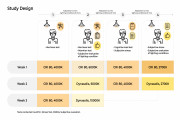 2022-09-23
2022-09-23
Dynasolis™, an LED pairing with circadian tune functionality exceeds the effect of standard LEDs on attention.
Tokushima, Japan – 22 September 2022: NICHIA, the world’s largest LED manufacturer and inventor of the high-brightness blue and white LEDs, has commissioned the Fraunhofer Institute for Building Physics IBP, to analyze its Dynasolis™ solution. The solution consists of a combination of Nichia's cyan-colored Azure LED and the multiple award-winning H6 LED family, which can adjust both color temperature and melanopic...
Continue reading →
 2022-09-23
2022-09-23
Powered by Joule Case battery technology, Insane Impact now offers clean energy options for customers
URBANDALE, Iowa--(BUSINESS WIRE)--Insane Impact, the nationwide leader of LED Screen Trailers and Video Walls, announced a new off-grid, battery-powered solution for its state-of-the-art displays through a new partnership with Joule Case. By adding Joule Case’s flexible, patented battery system and expertise, Insane Impact’s display solutions can now be powered by renewable energy sources for the first time to minimize the carbon fo...
Continue reading →
 2022-09-23
2022-09-23
ANSAN, South Korea--(BUSINESS WIRE)--Please replace the release dated August 29, 2022, with the following corrected version due to multiple revisions.
A classroom of Gaepo Appletree Academy where SunLike lighting is installed (Photo: Business Wire)
The updated release reads:
SUNLIKE LIGHTING, WITH PROVEN EFFECTIVENESS OF MYOPIA IMPROVEMENT, TO LIGHT UP A MAJOR ENGLISH-SPEAKING KINDERGARTEN IN KOREA
YBM Gaepo...
Continue reading →
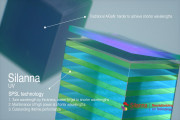 2022-09-23
2022-09-23
Easy wavelength tuning, higher power at short wavelengths, and exceptional lifetime performance
Brisbane, Australia, 15 September, 2022 - A major breakthrough in UV-C LED technology from Silanna UV offers huge advantages for applications as diverse as disinfection, water quality monitoring, gas sensing, liquid chromatography, and chemical and biological analysis. The new manufacturing approach promises to make deep ultraviolet and far ultraviolet LEDs easier to make, more efficient at shorter wavelengths, and more reliable. With the renewed focus on air, water and surfac...
Continue reading →
 2022-09-22
2022-09-22
Energy efficacy, spectra key for producing high-throughput plant phenotyping data from growth rooms to field AUSTIN, Texas & ROTTERDAM, Netherlands (Sept. 21, 2022)—Fluence, a leading global provider of energy-efficient LED lighting solutions for commercial cannabis and food production, has been selected by Wageningen University & Research (WUR) as the LED technology partner for its new Netherlands Plant Eco-phenotyping Centre (NPEC). In NPEC’s state-of-the-art phenotyping greenhouse, VYPR DUO 3x2 fixtures are used to ...
Continue reading →
 2022-09-22
2022-09-22
Digital signage now plays an even more crucial role in transforming experiences for today’s hybrid world of work and play
Samsung expands The Wall 2022 lineup with the addition of the IAB and IWB Series, which deliver incredible visuals.
Samsung Electronics Co., Ltd. today launched two new series of The Wall – Samsung’s cutting-edge Micro LED displays – in the Southeast Asia and Oceania (SEAO) region at the inaugural Samsung Display Tech Summit 2022.
Held in Bangkok, Thailand, the Summit hosted some 230 enterprise...
Continue reading →
 2022-09-22
2022-09-22
In Hall 8.0, stand B76 Lumos Controls will exhibit the world’s simplest and smartest lighting controls for energy-efficient buildings and smart lighting solutions.
California – September 15, 2022: Lumos Controls, the smart lighting control ecosystem from WiSilica, will exhibit the simplest and smartest lighting controls at Light + Building Autumn Edition in Frankfurt. The most awaited exhibition Light + Building includes over 1,500 exhibitors from 46 countries displaying the latest products on lighting, building automation, and more.
Lumos Contro...
Continue reading →
 2022-09-20
2022-09-20
Thomas Novotny, CTO of Innovation at Deutsche Telekom Business Solution, an event hostess, and Sebastian Anjou, Vuzix European Business Development Director
ROCHESTER, N.Y., Sept. 14, 2022 /PRNewswire/ -- Vuzix® Corporation (NASDAQ: VUZI), ("Vuzix" or, the "Company"), a leading supplier of Smart Glasses and Augmented Reality (AR) technology and products, is pleased to announce that it has received an award from Deutsche Telekom (DT) at Digital X 2022 for Enterprise Technology of the Year, Connected Wor...
Continue reading →
2022-09-20
Highlighting the industry's most extensive portfolio of telecom solutions and differentiated laser chips for next generation mega data centers SAN JOSE, Calif., Sept. 15, 2022 /PRNewswire/ -- Lumentum Holdings Inc. ("Lumentum"), a market-leading designer and manufacturer of innovative optical and photonic products, announced it will participate in eco-system partner demonstrations and highlight a comprehensive portfolio of optical communication solutions for current and future network applications at the European Conference on Optical C...
Continue reading →
 2022-09-20
2022-09-20
The SpaceSense™ feature from Signify offers a new way to automate your lights using Wi-Fi sensing technology for the WiZ lighting system
WiZ also comes with new luminaires, a control accessory and a range of new features for the new WiZ app V2
Eindhoven, the Netherlands – Signify (Euronext: LIGHT), the world leader in lighting, introduces a new app, features and products for its WiZ smart lighting system to enhance users’ daily convenience. The new offerings include SpaceSense™, a motion detection technology f...
Continue reading →
2022-09-16
UVTON, a Columbia-based Deep UV LED-based device and solutions provider, has announced sales of DUV LEDs with peak emission wavelength shorter than 365nm.
The company signed an agreement with the pioneer of this technology, Columbia-based Sensor Electronic Technology, Inc. (SETi). SETi is a subsidiary of Seoul Viosys Co., Ltd.. Under the terms of the agreement UVTON is granted an exclusive rights as a supplier of TO-packaged DUV LEDs in the United States.
“This is the first step in expanding UVTON business opportunities in D...
Continue reading →
 2022-09-16
2022-09-16
Applies violeds technology developed by Seoul Viosys, the world’s number one UV LED company ㆍ Removes up to 99.9% of harmful germs (E.coli, staphylococcus aureus, and pneumococci) within 10 minutes with UVC ㆍ Seoul Viosys offers optimized disinfection solutions, operating its own auto lab. ANSAN, South Korea -- UV-C disinfection technology solution, Violeds, developed by Seoul Semiconductor Co., Ltd. (KOSDAQ 046890), a globally recognized optical semiconductor manufacturer, is installed in the console boxes of Genesis, a global luxury vehic...
Continue reading →
2022-09-16
Groundbreaking motion detection turns your lights on and off without the need for sensors The SpaceSense™ feature from Signify offers a new way to automate your lights using Wi-Fi sensing technology for the WiZ lighting system WiZ also comes with new luminaires, a control accessory and a range of new features for the new WiZ app V2 Eindhoven, The Netherlands. Signify (Euronext: LIGHT), the world leader in lighting, introduces a new app, features and products for its WiZ...
Continue reading →
2022-09-16
DGAP-Media / 13.09.2022 / 07:30 CET/CEST AIXTRON launches next Generation G10‑SiC 200 mm product solution for Silicon Carbide EpitaxyHerzogenrath, September 13, 2022 – AIXTRON SE launched its new G10-SiC 200 mm system for high volume manufacturing of latest generation Silicon Carbide (“SiC”) power devices
DGAP-Media / 13.09.2022 / 07:30 CET/CEST
AIXTRON launches next Generation G10‑SiC 200 mm product solution for Silicon Carbide Epitaxy
Herzogenrath, September 13, 2022 – AIXTRON...
Continue reading →
 2022-09-16
2022-09-16
On September 26th, 27th and 28th, Nichia will proudly exhibit at the 2022 IUVA Americas Conference in Cincinnati, Ohio. Additionally, Nichia America’s Vice President, Erik Swenson, will be presenting on Tuesday, September 27th.
As new challenges continue to arise in public health, drinking water, reuse water and wastewater treatment, air pollution, hospital infections, ballast water treatment and industrial effluents, new applications emerge for UV technologies. The focus of this conference put together by the International Ultra-Violet Association is to ...
Continue reading →
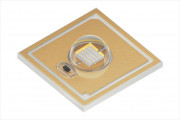 2022-09-16
2022-09-16
The new OSLON® UV family member from ams OSRAM provides market-leading wall-plug efficiency of in average 5.7 percent as per internal tests, at highest germicidal effectiveness of 265 nm Combined with the extremely powerful typical optical output of 100 mW out of a single die source and the compact package design it enriches any application which requires UV-C radiation The OSLON® UV 6060 is extending the possibilities from consumer applications like sanitizing surfaces to even industrial applications like upper air treatment in public...
Continue reading →
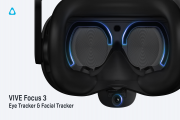 2022-09-14
2022-09-14
HTC VIVE is expanding its VIVE Focus 3 ecosystem with two new products: VIVE Focus 3 Facial Tracker and VIVE Focus 3 Eye Tracker. The new trackers offer more natural and immersive VR experiences, new options for enterprises to measure user responses, and even more accessible interaction methods such as gaze control.
Through enhanced eye and facial tracking, people can have better engagement in virtual collaboration, which is ideal for virtual events, training sessions, social groups, VIVE Sync remote meetings, and more.
With VIVE’s Wave...
Continue reading →
 2022-10-04
2022-10-04
 2022-10-04
2022-10-04
 2022-10-03
2022-10-03
 2022-10-03
2022-10-03
 2022-10-03
2022-10-03
 2022-09-30
2022-09-30
 2022-09-29
2022-09-29
 2022-09-27
2022-09-27
 2022-09-23
2022-09-23
 2022-09-23
2022-09-23
 2022-09-23
2022-09-23
 2022-09-22
2022-09-22
 2022-09-22
2022-09-22
 2022-09-20
2022-09-20
 2022-09-20
2022-09-20
 2022-09-16
2022-09-16
 2022-09-16
2022-09-16
 2022-09-14
2022-09-14